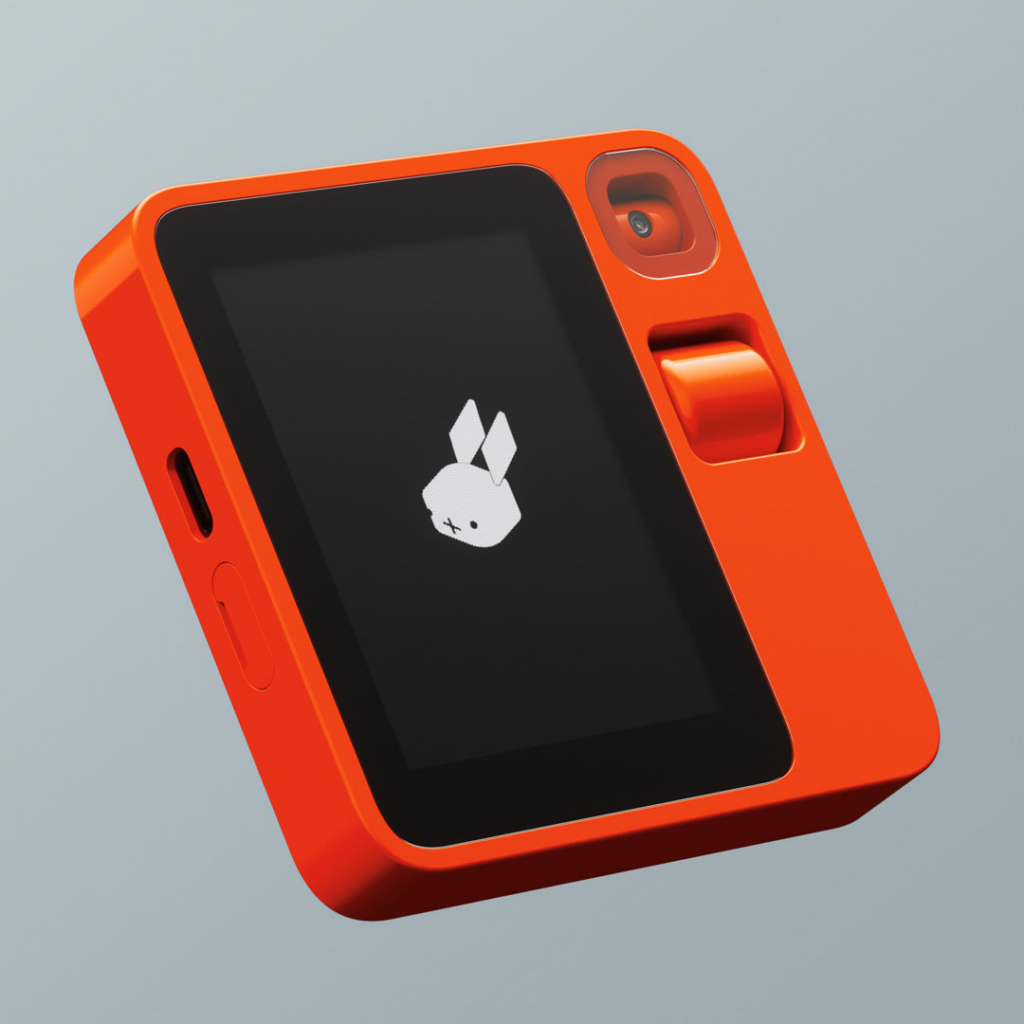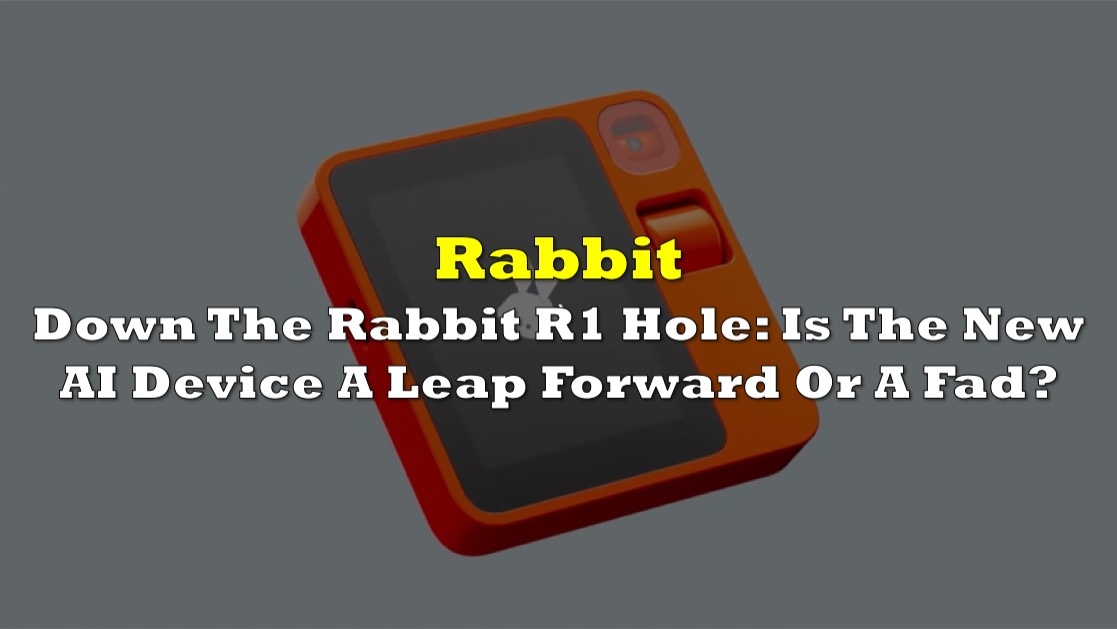A new artificial intelligence player has captured the attention of tech enthusiasts and industry leaders alike. The Rabbit R1, a standalone $199 device, has emerged as a groundbreaking AI agent, seamlessly integrating with mobile apps and executing tasks using its proprietary language model. The device, which operates without accessing APIs, represents a significant leap in the evolution of AI assistants.
The R1 takes user instructions in natural language, exemplified by its ability to call an Uber for a family of four upon request. Its teachable nature was showcased in a demo where it learned to generate images after a user interaction with Midjourney.

The success of this innovation is reflected in the recent announcement that the fifth batch of 10,000 R1 devices has sold out, with pre-orders for the sixth batch of 50,000 now open at rabbit.tech, promising delivery in June and July.
Microsoft CEO Satya Nadella expressed admiration for the Rabbit OS and the R1 device, stating, “I thought the demo of the rabbit OS and the device was fantastic. [It was] probably one of the most impressive presentations I have seen of capturing the vision of what is possible going forward for what is an agent-centric operating system and interface.”
Michael Nizich, a professor of computer science at New York Institute of Technology, highlighted the unique learning capability of the R1, emphasizing its potential to adapt to individual user behaviors. Nizich stated, “The rabbit device has a chance to learn how each user uses their phone for each of life’s chores. The device will then be able to very accurately replicate what you would do, how you would do it, and possibly even when you would do it.”
The R1’s power lies in its Rabbit OS, built atop the exclusive Large Action Model (LAM). This foundation model excels at inferring and modeling human interactions with computer interfaces. Users can integrate their existing apps with the R1 through the “rabbit hole,” a cloud-based platform, providing a seamless experience without compromising personal identity data or passwords.
The device’s effectiveness is attributed to its understanding of users’ digital routines. Simon James, managing director of Data & AI at Publicis Sapient, noted, “AI agents like those used in the R1 are the next step after simple question-and-answer systems,” envisioning the potential for novel problem-solving approaches and disruptions to existing business models.
Introducing r1. Watch the keynote.
— rabbit inc. (@rabbit_hmi) January 9, 2024
Order now: https://t.co/R3sOtVWoJ5 #CES2024 pic.twitter.com/niUmjFvKvE
Why a device?
The person behind Rabbit, Jesse Lyu, previously the founder of Raven Tech, has embraced the challenge of AI hardware design. Lyu’s approach involves merging innovative software experiences with familiar hardware, as seen in the R1’s design reminiscent of a retro walkie-talkie. With 50,000 pre-orders within five days, the R1 marks a significant success in the AI hardware space.
Addressing the criticism surrounding the need for an additional device, Lyu acknowledges the challenges but remains steadfast in his approach. “Hardware design is super, super, super hard,” he admits, highlighting the difficulty in finding the right balance between utility and ergonomics. Lyu’s strategy involves de-risking by offering a familiar form factor while introducing a revolutionary software experience.
Reflecting on his past collaborations, particularly the Raven H speaker with Teenage Engineering, Lyu emphasizes the importance of understanding cultural objects. The Rabbit R1’s design draws inspiration from dependable and tangible elements, such as the giant walkie-talkie button, providing users with reliable control and a nostalgic retrofuture aesthetic.
Lyu justified the hardware approach, stating, “We want to offer you one thing [AI] and the other thing [an amusing retro-future gadget] that takes you back to the ’90s, the good old fun times.” The R1, set to ship in March, is positioned not as a phone replacement but as a new gadget offering a unique AI experience.
Two weeks ago, we debuted r1 — our first AI hardware device and won:@RollingStone Best of CES Award@verge – Best Gadget@tomsguide – Best in Show@T3dotcom – Best AI Product@androidcentral – Best in Show@HotDotTech 24 in 2024@ZDNET – Best AI Innovation@HotDotTech Awards -… pic.twitter.com/69cs1utvVB
— rabbit inc. (@rabbit_hmi) January 23, 2024
Why not an app?
One of the most intriguing aspects of the Rabbit R1 is Lyu’s decision to create dedicated hardware instead of an app. Lyu believes that the significant innovation from his company lies in its LAM—the “rabbits” that can be utilized (or trained by users) to perform various tasks on their behalf.
In brief, Lyu acknowledges that Rabbit could function as software. “Ideally, in the future, Siri might perform a similar function, or even better,” he reflects. “However, from my standpoint, how do I envision building a business?”
If Rabbit were merely an app, Lyu expresses concerns about Apple “having access to his code,” seeing it as equivalent to sharing his company’s intellectual property. Developing and maintaining apps for both iOS and Android would necessitate ongoing substantial investment for optimal execution. Ultimately, Rabbit would be presented alongside every other app, lacking a distinct position.
Lyu points out, “Yes, you can achieve great success on the App Store, but there’s a lack of security, like, what if a better app emerges tomorrow? Think of filter apps for Instagram—there’s no loyalty whatsoever!”
Priced at $199, the Rabbit R1 has garnered the interest of over 50,000 individuals, yet notably, it is not positioned as a loss-leader. Key processing occurs in the cloud, enhancing user data security compared to most small batch hardware and reducing hardware costs. Lyu mentions that unit costs provide substantial margins to cover expenses related to outsourced AI processing, such as understanding user intention via ChatGPT.
According to their internal analysis, the most intensive users are projected to incur approximately $15 per month in charges to OpenAI, and Rabbit will have to take care of these expenses.

Lyu emphasizes, “We do have a good margin, at least for the first generation. The real scalable business is when people start teaching rabbits to do their own thing, so that you’re essentially creating rabbits instead of apps.”
As users sell their own rabbits, Rabbit OS will take a cut, akin to Apple’s App Store model. Lyu clarifies, “We’re not reinventing any business models.”
The initial batch of Rabbit R1s is set to ship in March, with subsequent deliveries occurring in waves through June or July of this year. Given the rapid pace of AI and AI hardware development, predicting the reception of the Rabbit R1 in the coming weeks, let alone in the next six months, proves challenging.
@awnlooker best way to eat this #RabbitR1
♬ original sound – awnlooker
“To be honest, I think there are other things in our mind we want to deliver. It’s just from a strategic point of view… AI is moving too fast,” says Lyu. “So we have to come out now, when the timing is exactly right.”
Despite the device’s initial success with 50,000 preorders, Lyu remains cautious about the rapidly evolving AI landscape and aims to capitalize on the current momentum.
Information for this briefing was found via AI Business, Fast Company, and the sources mentioned. The author has no securities or affiliations related to this organization. Not a recommendation to buy or sell. Always do additional research and consult a professional before purchasing a security. The author holds no licenses.









